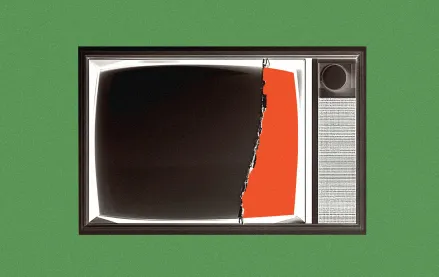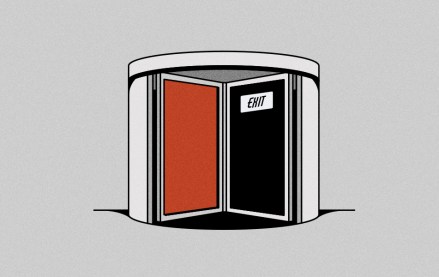As more creators expand to episodic content, studios want to repurpose and syndicate their shows

As a Digiday+ member, you were able to access this article early through the Digiday+ Story Preview email. See other exclusives or manage your account.This article was provided as an exclusive preview for Digiday+ members, who were able to access it early. Check out the other features included with Digiday+ to help you stay ahead
Not every creator will end up with a media empire like Mr. Beast’s and score a lucrative streaming deal — but maybe they don’t have to go that route.
Thanks to a variety of revenue streams, be it a product line or brand sponsorships, creators can supplement the ad revenue they generate from posting content to social media platforms. Now with content studios (and some agencies) offering new ways for creators to monetize existing content or produce original creator series for social or connected TV — they can up their content distribution and negotiate more extensive partnerships with brands.
Founded in 2007, production company London Alley, which has produced commercials for Smirnoff and Bose, is developing original creator content through its digital studio that seeks to fill a new space of “indie television” on YouTube, said Ryan Horrigan, president of London Alley Studios. By producing long-form episodic content with creators who come with an established audience (in the millions, per Horrigan) on platforms like YouTube or TikTok, Horrigan believes creators and brands can go beyond the traditional model of selling shows to streaming platforms.
“We kind of believe YouTube is a place to just have indie television with creators, and that the long-term goal isn’t necessarily to then sell it to a streamer and leave YouTube,” Horrigan told Digiday, adding that “YouTube now has more eyeballs on TV screens and [in] homes than Netflix does.”
YouTube boasts nearly 2.5 billion global users based on eMarketer’s October 2024 forecast, compared to Netflix’s 300 million paid subscribers as of Q4 2024, per Statista. (However, YouTube’s paid users for music and premium services were around 100 million this month, per Statista.)
Making original creator content or syndicating
In coming months, London Alley plans to release an eight-episode comedy show in the sports genre featuring a dozen comedy creators and talent that together draw some 50 million followers across their different channels. Horrigan declined to name the creators and other show details before its release. The studio also plans to pitch it to streamers, but is prepared to launch on YouTube (with up to 24 episodes annually) if no deal results — which may actually garner more brand deals or merchandise and views on social media, Horrigan contended.
“Bringing it to a streamer may give you a higher initial floor outcome, but I do think it gives you a lower ceiling as an outcome — it’s like a safer bet on the one hand, but it caps your upside,” he explained.
Digital content studio Mirage Digital, founded in 2021, is betting on another content syndication-like model — by partnering with popular creators to repurpose and repackage their existing content to more platforms, including FAST channels on Sling, Fubo and Roku, and social media, including Snapchat and YouTube. The studio worked on projects with photographer Mark Laita, who is behind YouTube channel Soft White Underbelly, and food creator duo Greg and Rebecca Remmey of Devour Power across social media, along with some 300 creators on its roster.
By acting as an extension of a creator’s team, the company will take creator content and turn them into episodic formats to distribute in multiple channels, said John Littell, co-CEO of Mirage Digital. With creators freed up from having to do constantly more content, the studio argues they can monetize more of it without having to churn production. Mirage Digital handles all the licensing, selling and distribution on platforms, making money by taking a cut off the ad revenue generated on platforms. The company declined to share how much it has generated through creators.
“We handle everything from A to Z once we have their permission to touch their content,” said Robin Bigge, co-CEO of Mirage Digital.
Mirage Digital has made more than 60 shows, including Dogs By Logan with a dog grooming creator and Stiff Socks with comedy creators Trevor Wallace and Michael Blaustein, across Facebook, Snapchat and OTT partner streaming platforms, including Tubi and Amazon Fire TV, and is reportedly building a content library of more than 10,000 hours and a syndication network drawing some 4 billion views and 20 million subscribers.
For example, in September esports organization Team Liquid expanded to FAST channels Fire TV, Sling, Fubo and Plex after building off its existing YouTube gaming content into a series of tutorials, gameplay content and video logs — and is seeing more than 1 million watched minutes in the past two months, according to Mirage.
“If we go to an advertiser, not only are they getting that creator partnership – then we can just facilitate it almost as that agency model — but they’re getting the additive aspect of not only tailored content being packaged for specific platforms, but additive distribution,” Bigge said.
What is next?
While London Alley aims to establish YouTube as a hub for high-quality, creator-led television, Mirage capitalizes on the value of existing creator content through strategic syndication — but both underscore the significance of working with creators who have built audiences and can generate high levels of engagement. Also, by moving toward longer-form, episodic creator content, it shows to brands these creators have a wide reach and distribution network, with the flexibility to explore multiple content types across different channels.
“With this longer form, original creator content, you can decide to buy out the added inventory on YouTube if you want around the show,” London Alley’s Horrigan said. “But also, if we’re partnering with you, we’re going to put your product in the show. We’re probably going to make shoulder content for you and for your socials — and then if the show’s a hit, you’re going to be in the show in perpetuity, so it’s evergreen.”
Nisha Kashyap, creative director at social media agency Sociallyin, said more creators are moving to this payment of “recurring content model rather than one-off posts” as they see more brand ambassador opportunities. At Kashyap’s agency, for example, an unnamed door security systems client is using creators in a long-term partnership that includes 10 or more different pieces of content over the span of three months, which could consist of “unboxing, before-and-after demonstrations, humor-driven trend content. … This approach allows us to maximize the investment in both the creator and the content itself, ensuring a steady stream of material that can be repurposed across multiple channels,” Kashyap said.
With a focus on influencer marketing with episodic content, Ana Arnet, head of influencer and affiliate at digital marketing agency Wpromote, recommends testing it with 5% to 10% of a brand’s influencer ad budget and “scaling based on performance. … Make sure your content has enough depth and variety to keep people hooked and eager for more,” Arnet added.
More in Marketing

Pitch deck: How Amazon is recasting Twitch as a core part of its CTV pitch
Amazon is positioning Twitch as a defining asset in its CTV ambitions.

Netflix transforms former mall department stores into experiential venues
The location in Dallas opens this week, and one at the King of Prussia mall near Philadelphia opened last month.

Future of Marketing Briefing: AI has created a new talent paradox in programmatic agencies
The job isn’t execution anymore. AI handles that. The job is judgement.








